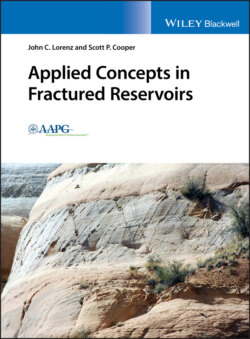Читать книгу Applied Concepts in Fractured Reservoirs - John C. Lorenz - Страница 2
Table of Contents
Оглавление1 Cover
2 Foreword
3 Preface
4 Acknowledgements
5 Introduction
6 Part 1: Understanding Natural Fractures: Fracture Types, Dimensions, and Origin 1.1 Introduction 1.2 Nomenclature and Fracture‐Classification Systems 1.3 Fracture Characteristics and Dimensions 1.4 The Mechanics of Fracturing Rock in Extension and Shear 1.5 Other Fracture Types Appendix 1.A The Relationship BetweenPore Pressure and the In Situ Effective Stresses Note
7 Part 2: Measuring and Analyzing Fractures in Reservoirs 2.1 Introduction 2.2 Planning a Core Program for Fracture Analysis 2.3 Logging Core for Fractures 2.4 Taking, Measuring and Analyzing Fracture Data 2.5 New Core vs. Archived Core 2.6 Oriented Core 2.7 Using CT Scans 2.8 Fracture Data from Image Logs 2.9 Comparing Fracture Data from Outcrops, Core, and Logs 2.10 Fracture Data from 3D Seismic Surveys* 2.11 Fracture Data Acquired by LiDAR 2.12 Fracture Data from Engineering Tests 2.13 Case Studies in Estimating Fracture Effectiveness from Core APPENDIX 2.A Workflow and List of Tests, Data Appendix 2.B Core‐Handling,Marking, Sampling, and Analysis Protocol for Core Studies Focused on Natural Fractures Appendix 2.C Slabbing Recommendations for Horizontal Core Note
8 Part 3: Effects of Natural Fractures on Reservoirs 3.1 Introduction 3.2 Classification 3.3 The Permeability Behavior of Individual Fractures 3.4 The Effects of Fracture Systems 3.5 The Sensitivity of Fracture Permeability to Changing Stress 3.6 Fracture Volumetrics 3.7 Effects of Fractures on Drilling and Coring 3.8 Completions: The Interaction Between Natural and Hydraulic Fractures
9 References
10 Index
11 End User License Agreement
